|
|
Since our last issue we know there have been several incidents of homes and businesses across Wales flooding. We are here to help advise what you can do, before, during and after a flood.
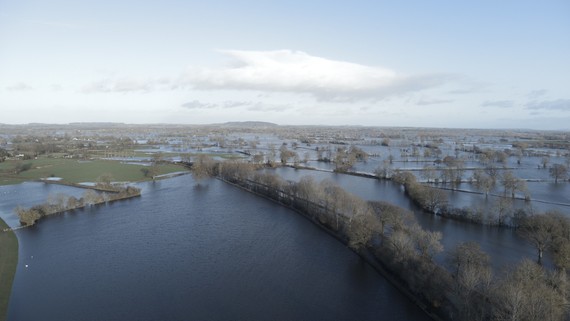 River Severn, 13 January 2023
You can visit naturalresources.wales/flooding for advice and information or please feel free to get in touch with us if you have any questions. We will try to answer any queries you may have. If your query needs to be answered by one of our partners, we will do our best to get those answers for you but please bear with us, as there may be a delay. Answers will be based on information available to date, as investigations continue.
It’s also a great help if you can provide us with information so we can improve our own understanding of flooding events, and our Flood Warning Service for the future. For example:
- Do you have dated photos with specific locations taken during or after the flooding, that you would be willing to share?
- Were there any actions from your flood plan, where you realised that you needed to make changes? Would you be willing to share anything you’ve learnt?
|
|
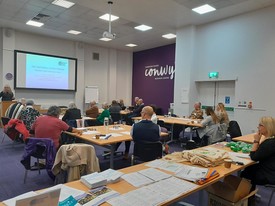
We are planning to run three network events in September and October 2023 in:
- north Wales
- mid Wales
- south Wales
Help us to arrange these by registering your interest and location preference by completing this short survey.
|
|
|
|
A new leaflet is available to help provide useful information after a flood.
It’s the size of a credit card when it’s folded, and opens up to provide a range of information that could be helpful if you have just experienced flooding.
You can request a hard copy of this to be sent to you, as well as any other leaflet and advice we have about flooding. To do this please complete this short form, or you can call General Enquires on 0300 065 3000 (Monday – Friday, 9am – 5pm).
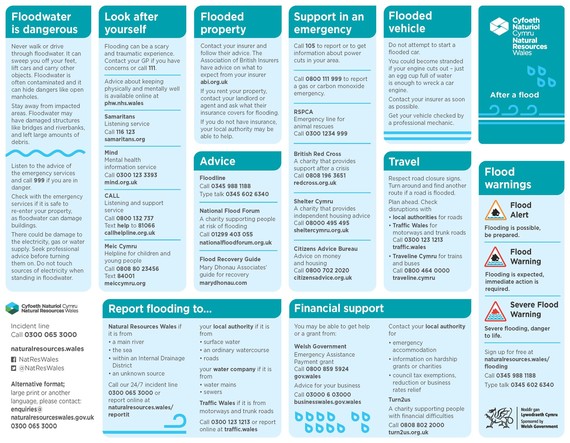
|
|
|
NRW provides 24/7 flood forecasting and a free Flood Warning Service to many areas at risk of flooding from main rivers and the sea in Wales.
 There are three types of flood warning message: Flood Alerts, Flood Warnings and Severe Flood Warnings.
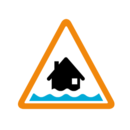
Flood Alert
- The lowest level of warning message
- The most frequent warning message we issue
- If possible they will be issued in daylight hours. For example, if flooding is possible overnight, we try to issue a flood alert before 9pm
- Often warn quite a large geographic area, like a whole river catchment or a stretch of coastline. So, flooding may impact some more than others within that same area
- Optional to register for if you sign up to our free flood warning service. Some people want the early warning provided by a Flood Alert. For example, those who live in a fast responding catchment or who own farmland near rivers and need to move livestock. Others would only want a warning if we expect flooding of property. This is provided by a Flood Warning
Example of a Flood Alert recently issued:
|
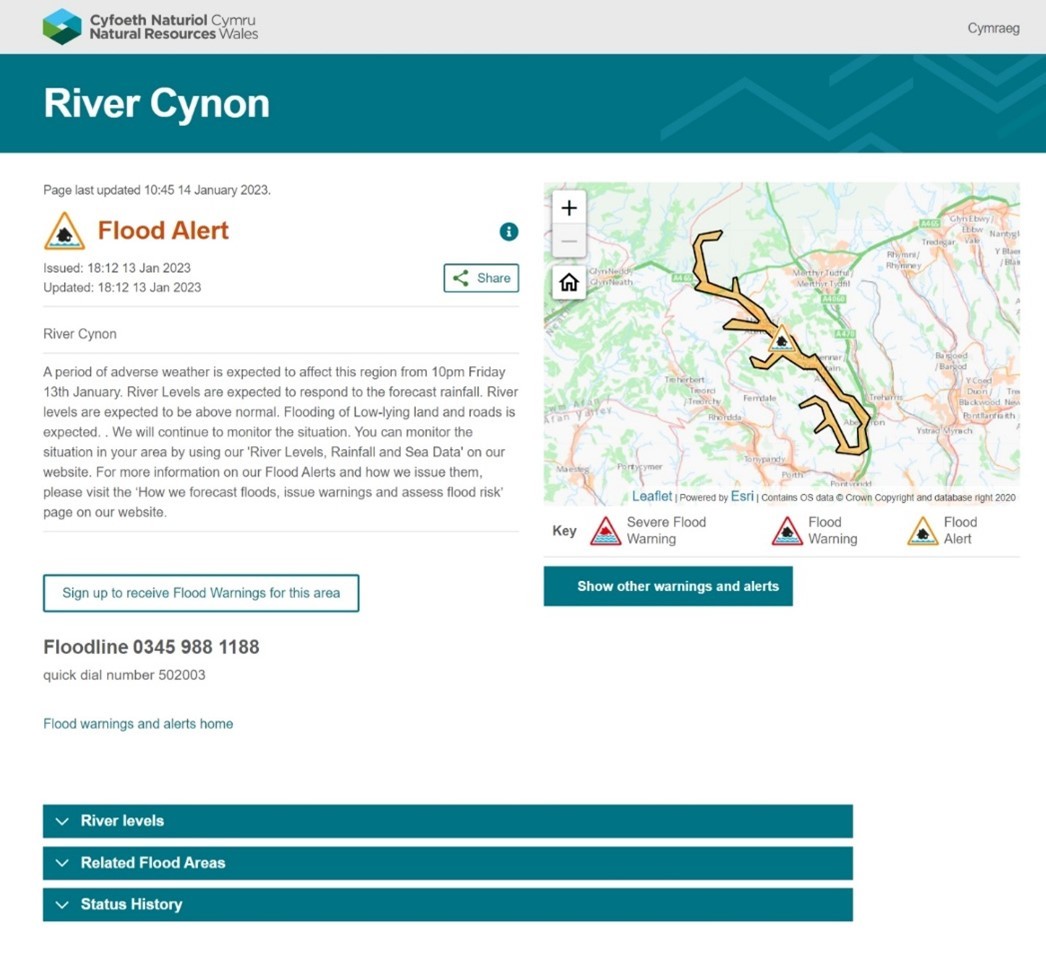
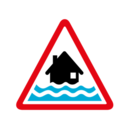
Flood Warning
Flood Warnings are issued when flooding is expected: we think flooding of homes and businesses will happen. If you receive a Flood Warning you should take action to protect yourself, family, pets, and property by acting on your flood plan.
Example of a Flood Warning recently issued:
|
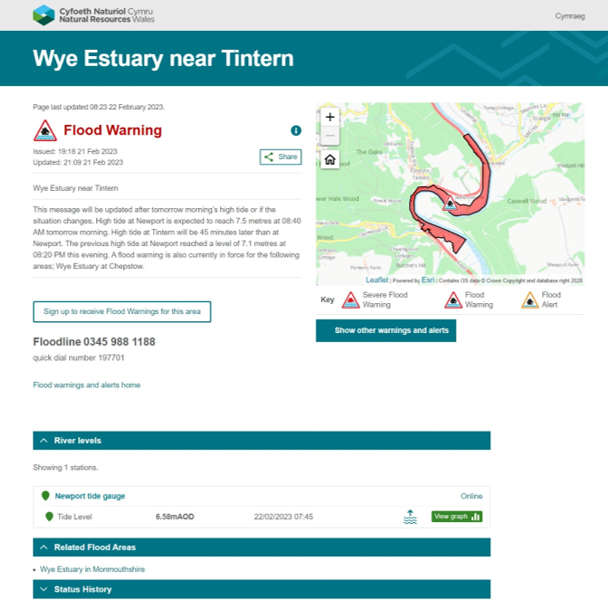

Severe Flood Warning
Severe Flood Warnings mean danger to life, or significant disruption to the community. These are issued when dangerous, deep, and fast-flowing floods are expected or are already happening. Immediately move yourself, family, and pets to a safe place, usually upstairs or to higher ground.
|
Here is a breakdown of potential impacts at each level of our Flood Warning Service:
|
Flood Alert
|
Flood Warning
|
Severe Flood Warning
|
|
Flooding is possible, be prepared.
|
Flooding is expected, immediate action is required.
|
Severe flooding, danger to life.
|
|
· Flooding of fields, recreation land and car parks.
· Flooding of minor roads.
· Flooding of farmland.
· Spray or wave overtopping on the coast.
|
· Flooding of homes and businesses.
· Flooding of rail infrastructure and roads.
· Significant waves and spray on coast.
· Extensive flood plain inundation (including caravan parks and campsites).
|
· Deep and fast flowing flood water.
· Debris in the water causing danger.
· Potential or observed collapse of buildings and structures.
· Communities isolated by flood waters.
· Critical infrastructure for communities disabled.
· Communities evacuated.
· Military support.
|
You can note where in your local area is covered by a flood alert or warning in a personal flood plan.
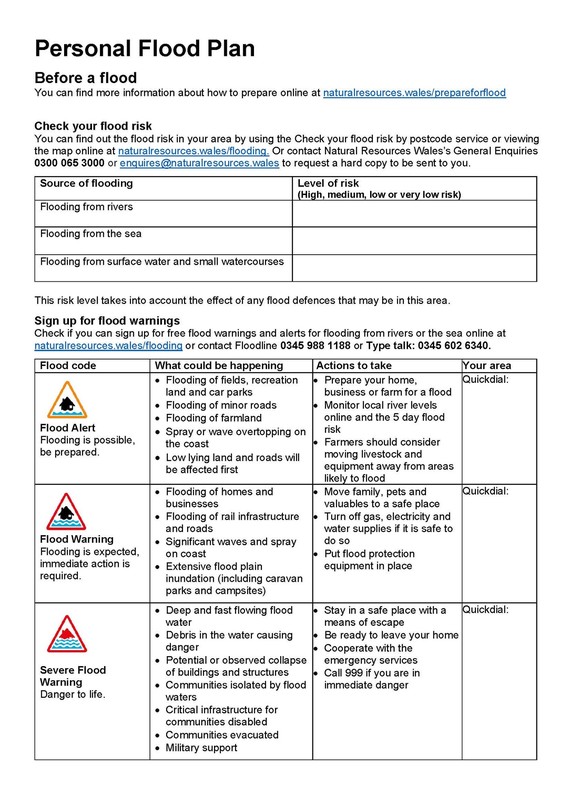 Image of Personal Flood Plan template
You can also find out more information on our website about how we forecast floods, issue warnings and assess flood risk and sign up, update your details or cancel flood warnings.
For more information about flood alerts, you can read this blog from last year:
Improving the Flood Alert Service.
|
|
|
A natural disaster like flooding can be traumatic. Whether you’ve experienced flooding or if you’re worried you might flood, it can be a very stressful time.
Who to go to for help and advice
Anyone with concerns for their own health, or a loved one’s should contact their GP for advice, visit 111.wales.nhs.uk or call 111.
There are also some organisations who can help:
Samaritans
A charity that provides a listening service
Call 116 123
Email jo@samaritans.org
Samaritans.org
Mind
A charity that provides a helpline and also has information online
Call 0300 123 3393
Mind.org.uk
CALL
A mental health helpline for Wales
Call 0800 132 737
Text the word HELP to 81066
Callhelpline.org.uk
Meic Cymru
A helpline for children and young people up the age of 25 in Wales
Call 0808 80 23456
Text 84001
Meiccymru.org
|
|
|
Our advice and guidance is available as leaflets that you can use and share with others. You can request:
- paper copies to be sent directly to you
- multiple copies if you want to share with others
- alternative format, large print or other languages
You can view and download digital versions, and request copies to be sent to you by completing the short form below. To do this please complete this short form, or you can call General Enquires on 0300 065 3000 (Monday – Friday, 9am – 5pm).
|
|
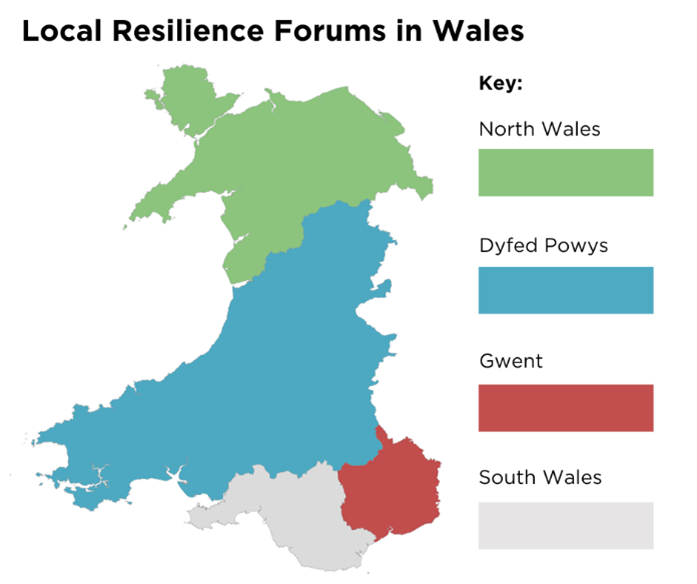
Local Resilience Forums (LRFs) bring together organisations that work together to prepare for a range of emergencies that may occur, including flooding. Their work focuses on the requirements set out in the Civil Contingencies Act 2004.
There are four Local Resilience Forums in Wales, and the areas match the boundaries of the police forces. They are:
Lots of organisations are involved, and they are defined in the Civil Contingencies Act as either Category 1 or Category 2 responders.
Category 1 responders include:
- Fire and Rescue Service
- Police
- Ambulance Service
- Natural Resources Wales
- Local Authorities
- Local Health Boards
- Public Health Wales
- Maritime and Coastguard Agency
- British Transport Police
Category 2 responders include:
- Utility operators (electricity, gas, water, sewerage, telephone service)
- Transport operators
- Health and Safety Executive
Together, these organisations work through the LRF to ensure they prepare for and respond to emergencies in a coordinated and effective way.
|
|
|
|
Below are messages provided on behalf of others, which may be of interest to you.
Flood Re

Build Back Better is designed to reduce the cost and impact of future floods by including property resilience measures as part of flood repairs.
The devastating impact of flooding on a home can take weeks or even months to put right, meaning families often endure the emotional distress a flood brings long after the water level has returned to normal. Repairing homes to the same state they were before leaves them wide open for the next flood – this not only has huge financial costs to homeowners and insurers, but also has a unique burden on the mental health and wellbeing of families who are affected.
Build Back Better, launched by Flood Re, the joint initiative between the UK insurance industry and the UK Government to promote the availability and affordability of flood insurance, enables participating insurers to offer customers access to reimbursement costs of up to £10,000, over and above work to repair damage and loss caused by a flood.
The funds, which insurers can claim back from Flood Re, can be used to pay for the installation of flood resilience measures such as raised electrical sockets, self-closing air bricks, non-return valves, along with flood resistant doors and the replacement of wooden floors with waterproof tiling and grout. The scheme also covers the cost of surveys to understand the flood risk and potential mitigation of individual properties.
Investing in property level flood resilience measures lessens the impact of future flooding, enabling householders to return to their homes sooner and significantly reducing the stress and trauma associated with flooding. It also improves the resilience of the UK’s overall housing stock to the impacts of the UK’s changing climate.
|
Association of British Insurers
North Wales Local Resilience Forum (NWRF)

NWRF provide multi-agency training for partners involved in planning for and responding to incidents in the North Wales area.
If you’re interested in more information about this, or if you are an organisation or a flood volunteer for your community and you would like to attend a session, please contact nwrf@northwalesfire.gov.wales
|
|
|
- What would you like to see in future issues of this newsletter?
- Is there something you’d like to know more about?
- Would you be willing to share your experiences of flooding or as a community volunteer?
- Get in touch if you missed any of our previous issues, and we can share them with you.
You can choose which language you’d like to receive our newsletter in. Click ‘manage my preferences’ in the subscription management options at the end of the newsletter, and you can choose between English, Welsh or both languages. If you haven’t chosen your preferred language, we will send you both versions.
NRW is not responsible for the content of other sites. We are providing this as a signpost to information, and not as a promotion of other organisations or companies. We believe the advice that they are sharing is helpful to everyone. Links to external sites may only have information available in English.
|
|
|
|
|